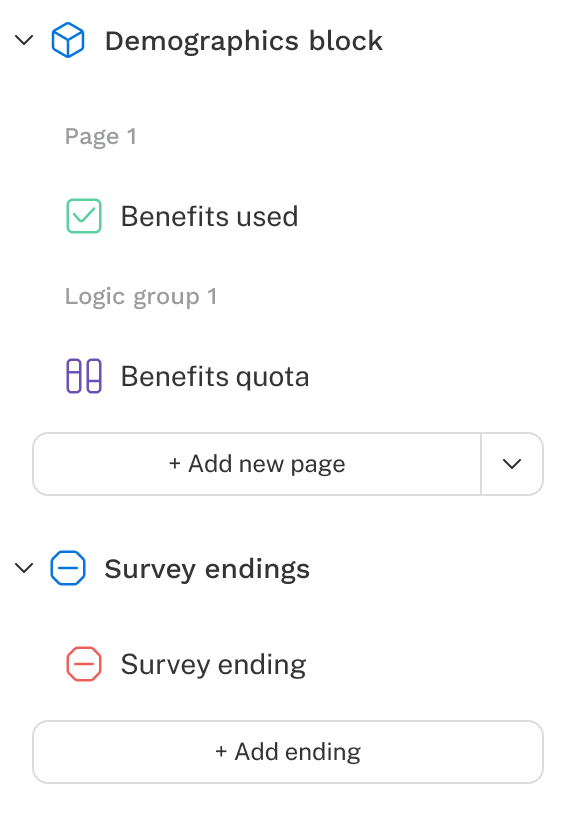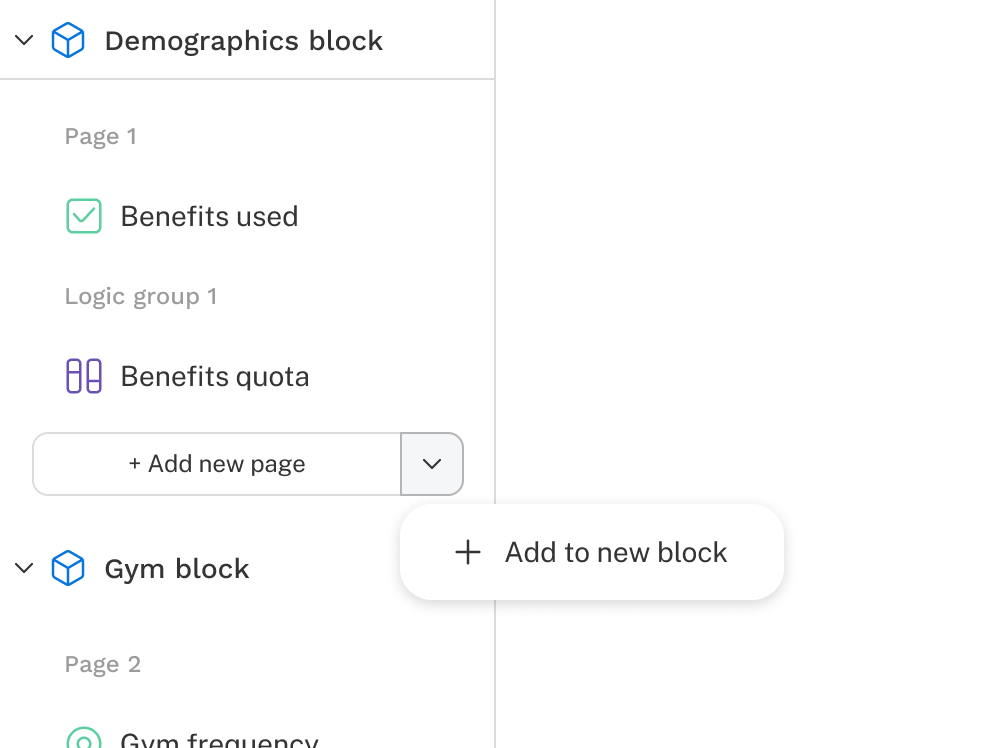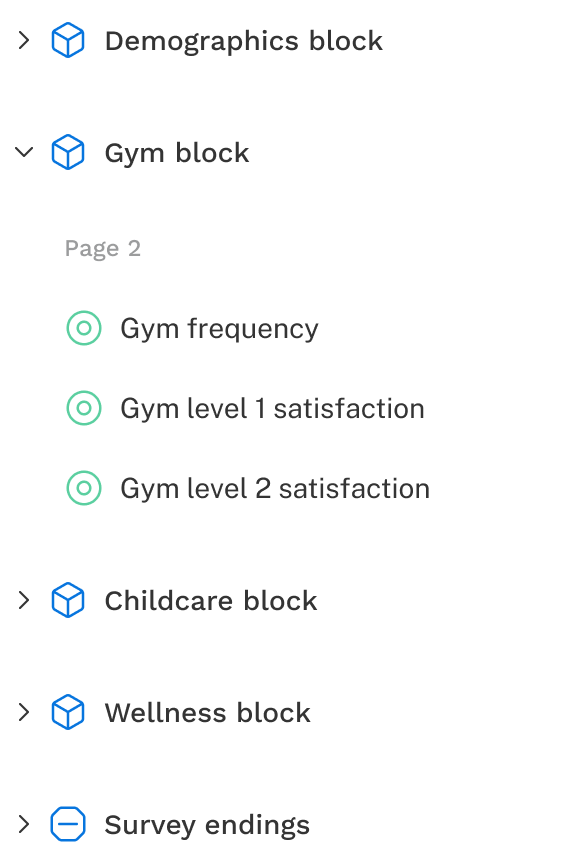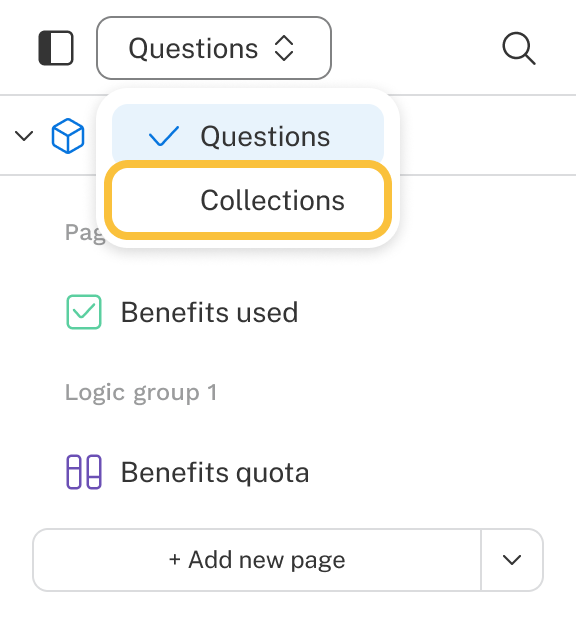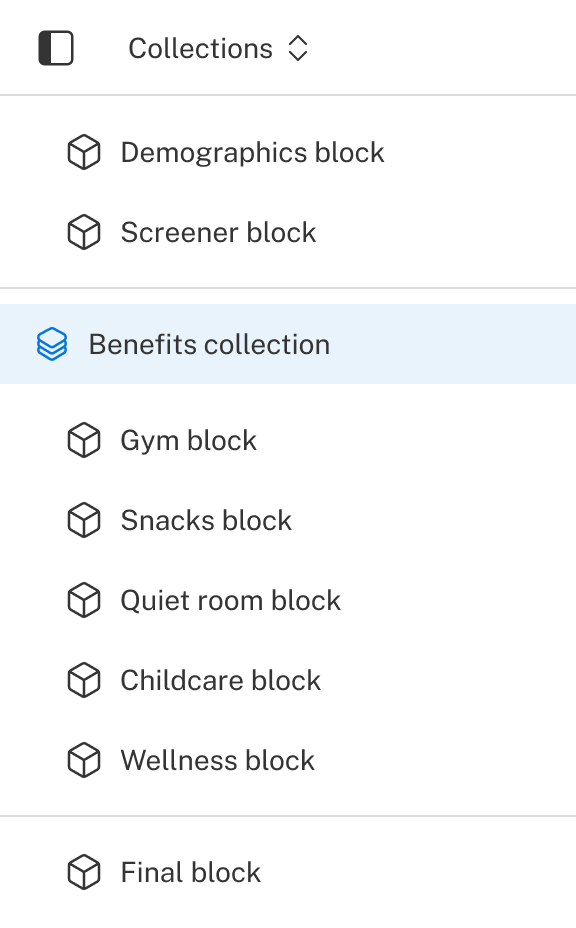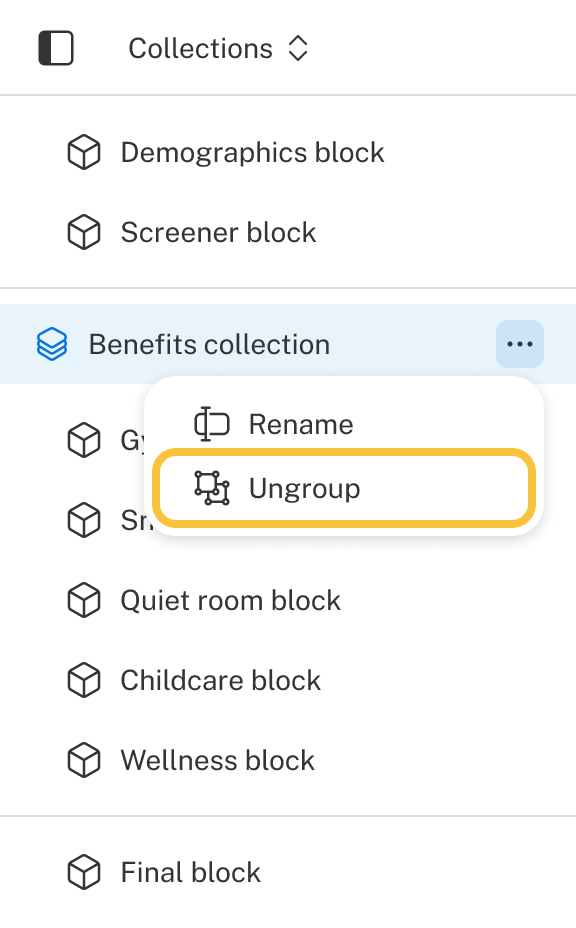Overview
Blocks are containers in a survey that organize all survey elements, such as questions, pages, and logic groups. Every survey will have at least two blocks:
- Questions block: Contains the main survey content.
- Survey endings block: Contains survey endings.
All elements must be inside a block. Because of this, when you add the first element to your survey, it’s automatically placed into a block. A separate block is also added to the end of the survey containing survey endings.
